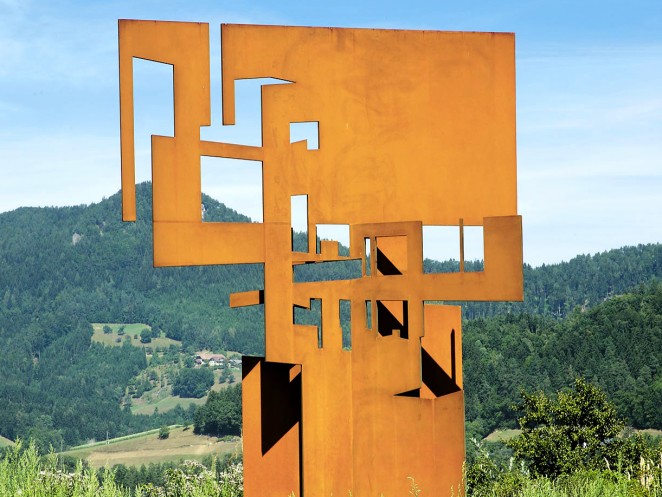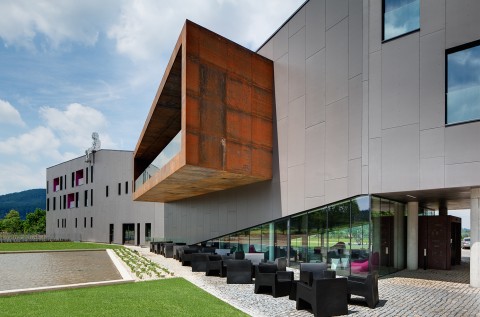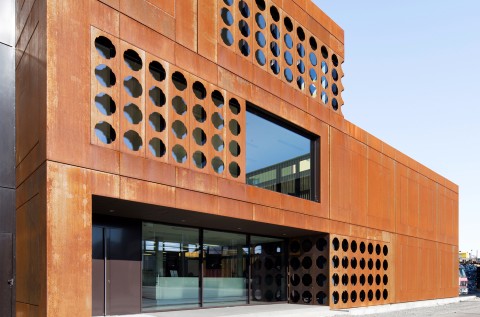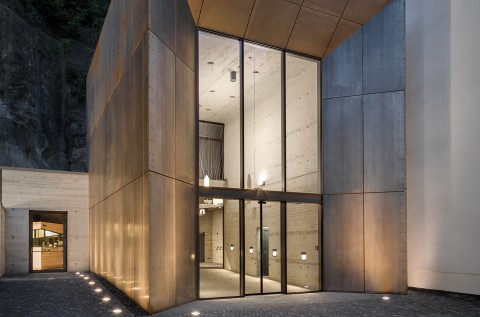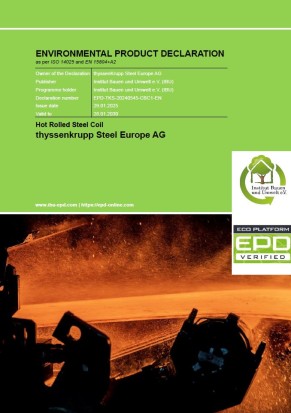Protected from wind and weather

Picture source: AMS GmbH, www.ams-mbt.de
Our weathering steel patinax gets ist weather-resistant properties from the alloying elements copper, chromium, nickel and phosphoros. Through the chemical interplay of these elements, a protective layer forms on the surface of the steel in one or two years – provided that the steel is confronted with alternating weather conditions during that time. This rust layer, created on purpose and consisting of low-solubility sulfates or phospates, acts as a protective shield for the steel below. After this first period of rusting, the surface becomes virtually impermeable to oxygen. In that manner, further corrosion losses of weathering steel are reduced to 0.01 mm per year – in comparison to 0.02 mm of carbon structural steel.
patinax steel grades
| Steel grade |
Reference grade DIN EN 10025-5 |
Material No. |
|---|---|---|
| patinax 355 | S355J2W | 1.8965 |
| patinax 355P | S355J2WP | 1.8946 |
Note: By agreement, weathering steels patinax can be provided with dual certification in accordance with DIN 10025-5 and CE marking.
Dimensions weathering steel
| Steel grade |
Thickness from _ to in mm |
Width or in mm |
|---|---|---|
| patinax 355 | 2.00 – 13.00 | 1,500 / 2,000 |
| patinax 355P | 2.00 – 12.00 | 1,500 / 2,000 |
Uniquely attractive exterior
At the end of the roughly three-year process, the weathering steel will display its typical reddish-brown color. The exact coloring and surface characteristics differ, depending on the environment the steel is used in. City, country, or seaside – each location comes with its own peculiarities. patinax reacts to the environmental conditions and blends into its surroundings naturally. Because of its unique look, this steel is especially well suited for artistic architecture projects like steel sculptures or external facades. Other landscape structures such as bridges can profit from a use of patinax as well, profiting from the high corrosion resistance and the attractive coloring.
Easy application, most often uncoated
When using patinax for outdoor applications, customers will most often not need to pay for an additional coating. Thanks to its natural rust layer, our weathering steel is mostly used unprotected. Still, one should check whether the location fulfills the requirements. Should the environment be especially polluted or particularly wet, we strongly recommend an additional surface protection. You may also consider to use patinax 355P under those circumstances. This steel grade has a higher phosphorus content than patinax 355 and thus an even better corrosion resistance. Both grades are available as uncoated wide hot strip and on request as cut-to-length plate. patinax can be formed, machined, flame cut, welded as well as bolted and riveted. In particular, patinax 355 can be applied and processed in the same way as comparable carbon structural steel. When it comes to weather resistance, rusting performance and look, however, this thyssenkrupp weathering steel is superior.
Corrosion losses of carbon structural steel and weathering steel

Corrosion losses of carbon structural steel and weathering steel





